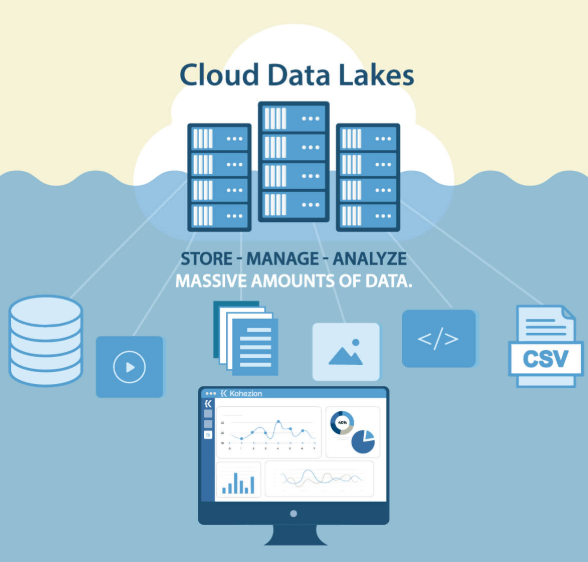
Data breaches have become a growing concern for large enterprises, and managing unstructured data plays a crucial role in preventing them. In this digital age, unstructured data—comprising files such as emails, documents, images, and videos—has become a significant part of an organization’s data landscape. However, managing this type of data is not always straightforward and can create potential vulnerabilities. This blog explores why large enterprises must focus on unstructured data management to minimize risks, and the best practices they should implement to avoid data breaches.
The Rising Threat of Data Breaches
Data breaches are not just an inconvenience; they can lead to severe financial loss, harm to reputation, and regulatory penalties. Unstructured data, which often remains poorly managed, is a key contributor to these risks. The vast amount of unstructured data within an enterprise can make it a prime target for cybercriminals if not handled properly. Without a clear strategy for managing and securing this data, businesses risk exposing themselves to significant vulnerabilities.
Why Unstructured Data Management Matters
Managing unstructured data effectively involves organizing, securing, and optimizing these data sets to ensure they are accessible when needed, but protected from unauthorized access. The challenge lies in the sheer volume and variety of unstructured data, making it more complex to control. However, prioritizing unstructured data management is essential for reducing the risk of a data breach.
Understanding the Data Footprint
The “data footprint” refers to the total amount of data an organization holds. As unstructured data increases, it amplifies the data footprint, making management and security more challenging. A large data footprint increases the number of potential attack points that hackers could exploit. By managing unstructured data properly, enterprises can reduce unnecessary data and lower their overall data footprint, thereby minimizing security risks.
The Importance of Data Minimization
Data minimization is about retaining only the essential data necessary for business operations. For large enterprises, this practice is vital in reducing exposure during a data breach. With effective unstructured data management strategies, businesses can ensure that only critical and relevant data is kept, minimizing the potential impact of a breach and reducing the volume of sensitive information that could be compromised.
Proactive Data Management: A Key to Prevention
The best way to prevent data breaches is to be proactive in managing unstructured data. By conducting regular audits, classifying data correctly, and addressing potential vulnerabilities early on, businesses can significantly reduce their risk. Proactively managing unstructured data also involves applying the necessary security measures to safeguard against unauthorized access.
Boosting Data Security
Effective management of unstructured data goes hand-in-hand with securing it. Businesses should implement robust security protocols, including encryption and access control, to protect sensitive data. Security assessments should be carried out regularly to identify potential weaknesses and ensure data protection measures are consistently updated. By integrating security into the data management process, enterprises can ensure their unstructured data is not exposed to risks.
Ensuring Compliance with Regulations
Data protection regulations, such as GDPR, require organizations to manage their data securely and comply with strict rules around access and storage. Non-compliance can result in hefty fines and legal consequences. By focusing on unstructured data management, enterprises can streamline their compliance efforts, ensuring they meet all regulatory requirements and avoid potential penalties related to data breaches.
Optimizing Data Resources for Efficiency
Proper unstructured data management not only helps in mitigating risks but also in optimizing operational resources. Reducing the volume of redundant or outdated data allows enterprises to save on storage costs and focus their efforts on managing critical data. This efficient use of resources enhances the overall performance and security of the organization.
Best Practices for Managing Unstructured Data
To safeguard against data breaches, large enterprises should adopt the following best practices for unstructured data management:
- Data Classification: Organize unstructured data based on sensitivity and relevance to ensure that proper security measures are applied.
- Data Minimization: Regularly review data and remove unnecessary or outdated information to reduce exposure in case of a breach.
- Advanced Security Measures: Implement encryption, access controls, and other security technologies to prevent unauthorized access to unstructured data.
- Regular Audits: Conduct frequent audits of unstructured data to identify vulnerabilities and ensure that security practices are up to date.
- Employee Training: Educate employees on the importance of managing unstructured data and following data security best practices to prevent accidental breaches.
Conclusion
Large enterprises must prioritize unstructured data management to reduce the risk of data breaches. By focusing on minimizing their data footprint, implementing strong security measures, and following proactive management strategies, organizations can protect themselves from the substantial financial and reputational costs of a breach. Effective management of unstructured data is not just about compliance; it is a strategic approach to securing sensitive information and ensuring operational integrity.
Investing in robust unstructured data management practices today prepares enterprises to handle future security challenges and remain compliant with regulatory standards. By doing so, businesses can safeguard their data, mitigate risks, and ultimately avoid the high costs associated with data breaches.

































































